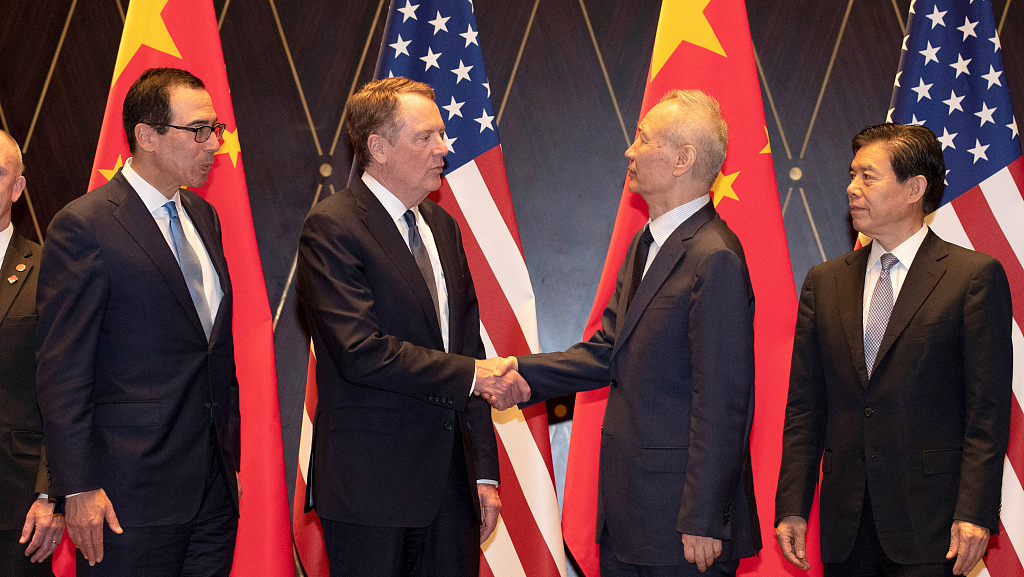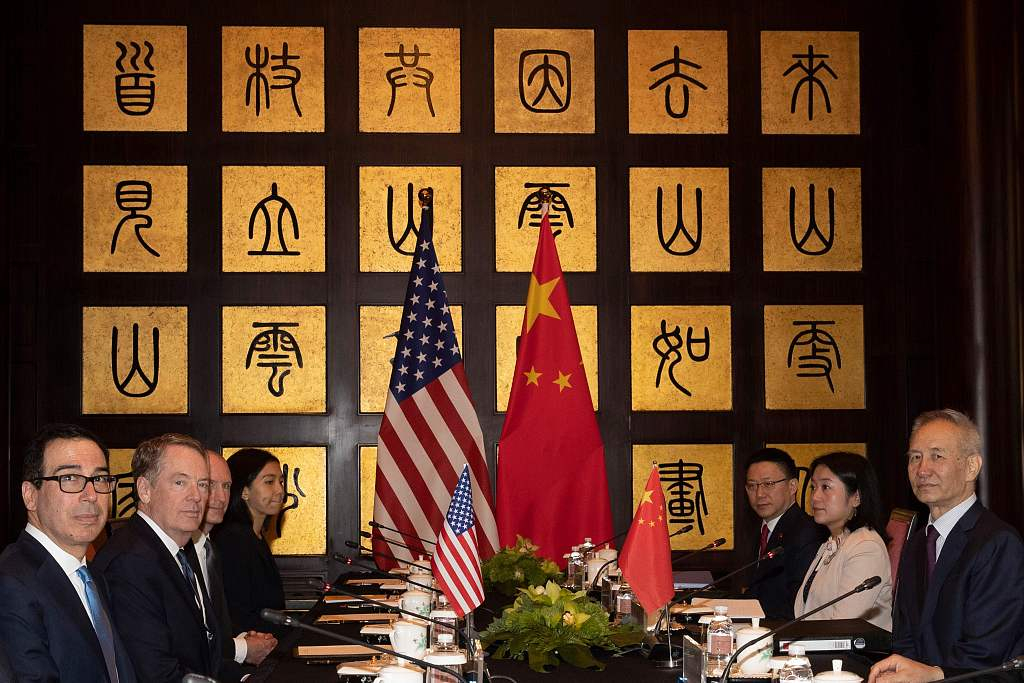

Editor's note: This article was first published by China Plus on July 31. The article does not necessarily reflect the views of CGTN.
Trade officials from China and the United States have wrapped up their latest round of negotiations in Shanghai after two days of reportedly candid, efficient and constructive in-depth communication. One major topic discussed during the 12th round of talks was China purchasing more American agricultural products. The United States is expected to facilitate conditions favoring such procurement. Both sides decided to hold the next round of talks in the United States in September.

Chinese Vice Premier Liu He (R) with United States Trade Representative Robert Lighthizer (2nd L) and Treasury Secretary Steve Mnuchin (L) before the start of talks at the Xijiao Conference Center, Shanghai, July 31, 2019. /VCG Photo
The latest development didn't come easy as both sides witnessed ups and downs since trade talks began in February 2018.
The negotiations suffered a big setback after Washington moved unilaterally to impose extra tariffs on 200 billion U.S. dollars' worth of Chinese goods in May, disregarding protests from Beijing. The move, which went against the consensus reached by the two heads of state at the G20 Argentina Summit late last year, also had a negative impact on the world economy.
In its latest world economic outlook report, the International Monetary Fund revised its forecast for global growth to 3.2 percent in 2019 and 3.5 percent in 2020, both down 10 basis points from its April projections.
History has proven that there are no winners in trade wars and cooperation is the only correct choice for both China and the United States. The two state leaders agreed to get back on the right track and resume trade talks on the basis of equality and mutual respect at the G20 Osaka Summit in June.
Such a consensus was reflected by discussions over China increasing its purchase of U.S. agricultural products in accordance with domestic demand and the United States creating preferential circumstances for this to take place. In addition, the two sides agreed to continue high-level consultations in the United States in a little over a month's time.
Both parties again demonstrated their willingness to meet each other halfway and keep up the momentum for further dialogue until the disputes are settled. Beijing and Washington have every reason to push things forward.
The outcome of the latest round of talks shows that the two sides didn't shy away from sensitive and thorny issues, but rather exchanged views on a number of subjects including their core concerns. This reflected the pragmatic manner both sides held in resolving problems and contradictions.
The latest talks were held in Shanghai, a city that witnessed the signing of the Shanghai Communique, or the China-U.S. Joint Communique, 47 years ago, which opened the door to the normalization of bilateral relations. Shanghai is also the frontier for China's opening up to the outside world with over 4,800 U.S. companies operating and profiting here.
The city has now witnessed the Sino-U.S. trade talks getting back on track. To keep up the positive momentum, once again, the key lies in putting the Osaka consensus into practice, adhering to the principle of equality and mutual respect, as well as respecting each other's legitimate concerns.
Intense pressure would only lead to more unpredictable scenarios which are most likely not conducive to solving the problem. In the meantime, Beijing has long voiced its position on major issues concerning its bottom line, upon which the Chinese side is unlikely to compromise in future talks.
(If you want to contribute and have specific expertise, please contact us at opinions@cgtn.com.)

Copyright © 2018 CGTN. Beijing ICP prepared NO.16065310-3
Copyright © 2018 CGTN. Beijing ICP prepared NO.16065310-3